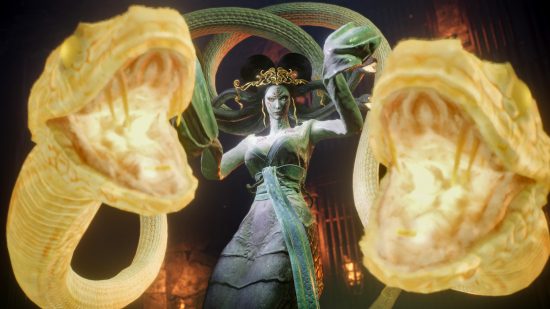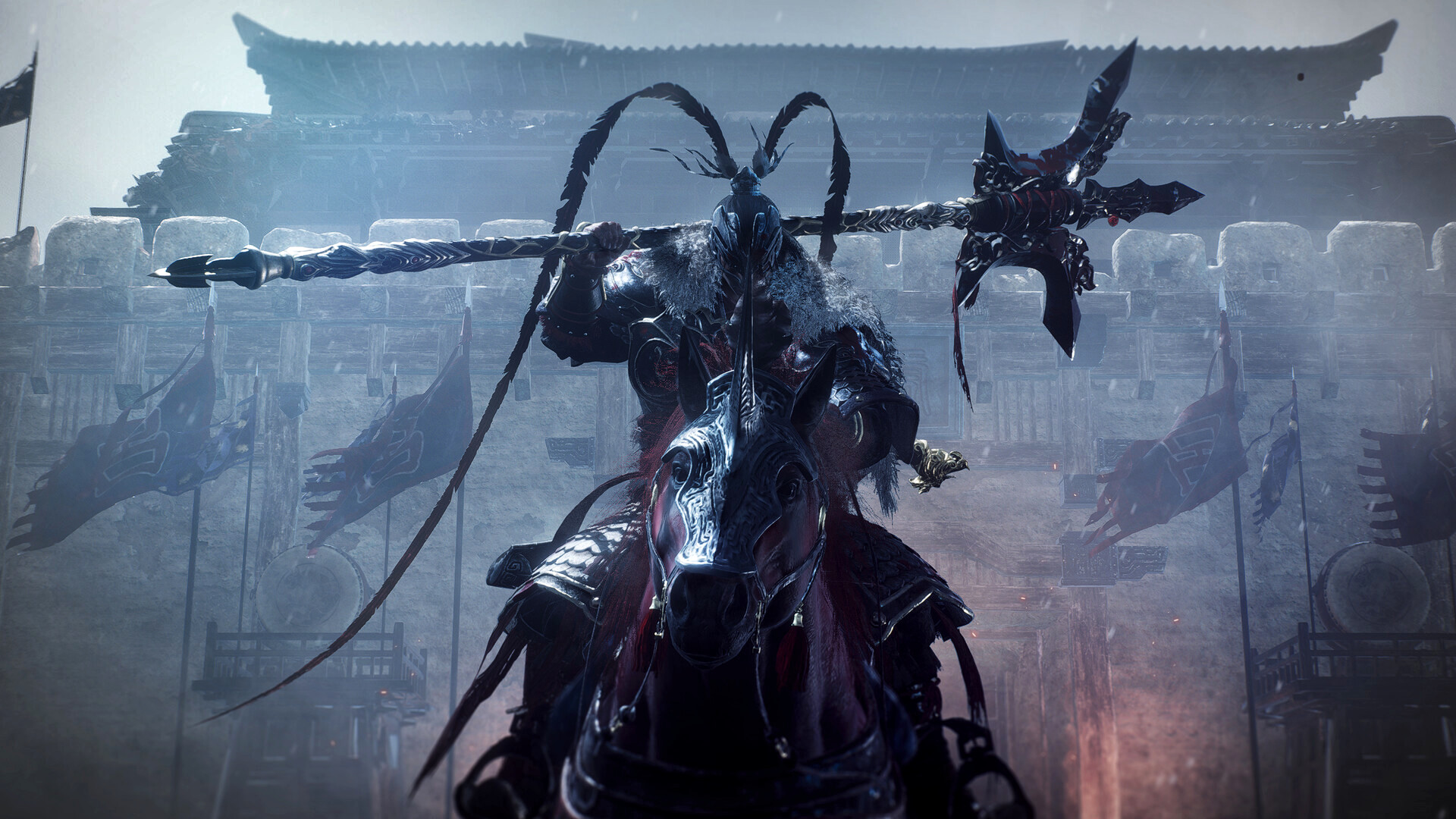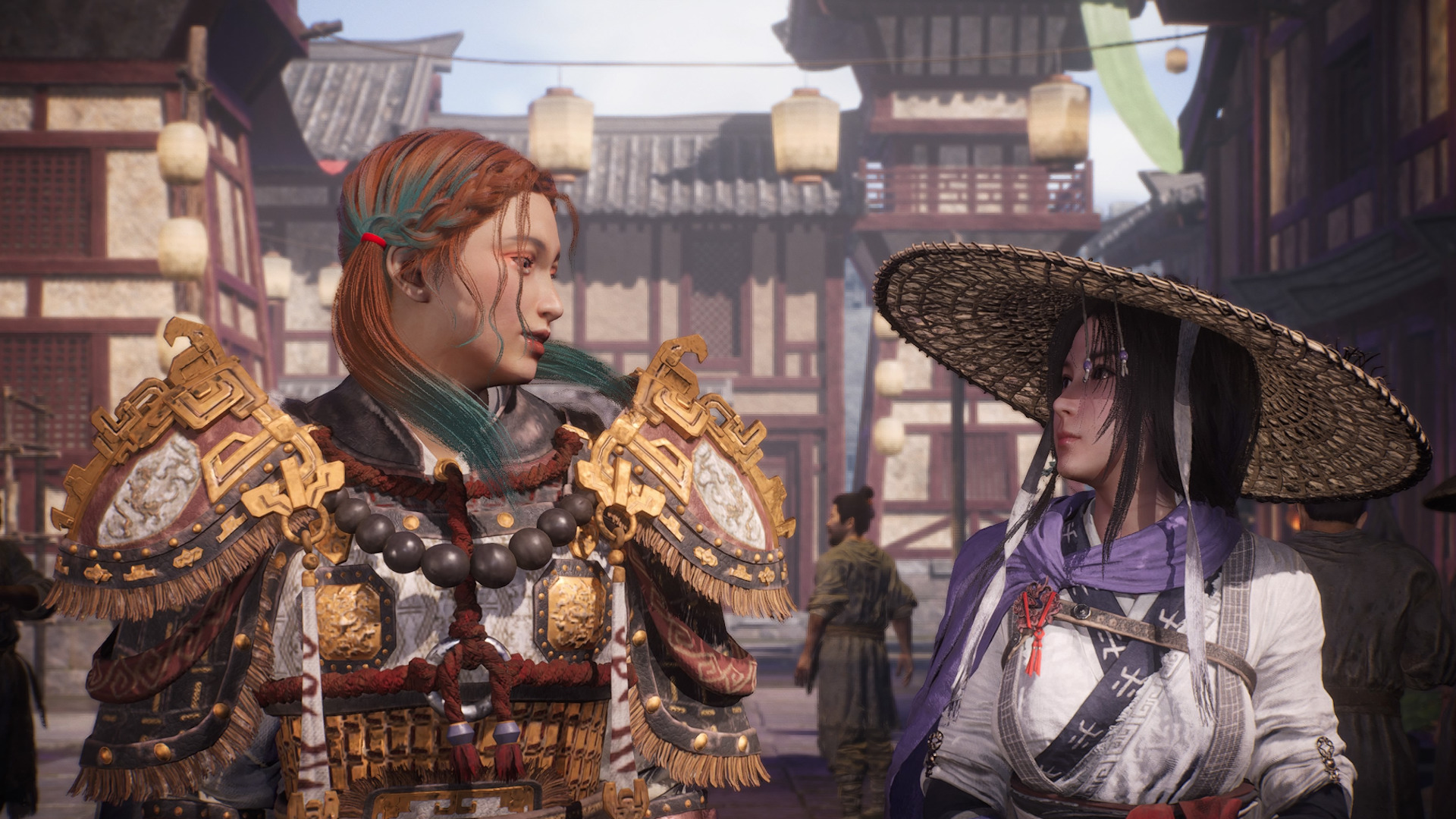Our Verdict
Wo Long’s dance-like battles and refreshing twists on the Soulslike formula make it one of the most effective forks of the genre, even if it falls far short of the subtle world building expertise seen in FromSoftware’s games.
It’s hard to stand in the shadow of Dark Souls. Many developers have tried (and failed) to put their own spin on the formula, with a select few managing to break through the fog wall. One of those studios is Team Ninja. Despite not quite having FromSoftware’s knack for worldbuilding, Team Ninja has delivered some extremely accomplished Soulslikes over the years, such as Nioh and its sequel, Nioh 2. Wo Long: Fallen Dynasty is the team’s latest effort, and arrives with the help of former Bloodborne producer Masaaki Yamagiwa. Excited? You should be.
This supernatural retelling of Lou Guanzhong’s Romance of the Three Kingdoms is a challenging odyssey chock full of smart ideas and blood-pumping boss battles against eldritch foes. It respectfully derives from the Soulsborne format, but pushes in different directions, curating a firm identity of its own. Those with a masochistic itch and a completed Elden Ring save file would be very foolish to miss it.

In a move that might be related to Wo Long’s Bloodborne pedigree, there’s not a shield in sight, and you’ll soon learn that countering attacks that would normally kill you is your only real form of defence. A spirit gauge starts in the middle and ebbs and flows as you fight. Overextend with too many attacks, spells and failed deflections, and you’ll lose your spirit and be staggered, leaving you open to killing blows. Time your deflections properly, however, and after a few successful hits, you’ll be in surplus spirit, which you can activate with the Triangle / Y button to perform special attacks that are difficult to interrupt and quickly break through an enemy’s guard. Break an enemy’s spirit completely, and you can perform a Fatal Strike that deals massive damage, Sekiro-style.
Wo Long’s basic back and forth is a lot to get used to (even as a veteran of Sekiro and Nioh 2, the tutorial boss took me longer than I’m willing to admit), but once the muscle memory sinks in, everything starts snapping into place beautifully. If we stopped here, Wo Long would be a mechanical success, but Team Ninja remains keen to layer innovative systems on top of this solid base to tease out a bold new approach to the typical Soulslike gameplay loop. This one’s all about exploration, you see.
To set the scene, Wo Long’s campaign takes place across 40-something hours of open-ended missions framed in gorgeous, varied environments which almost always end in a tricky boss. You start each one of these missions with a Morale Rank of zero, and the goal is to grow your rank across the mission by breaking spirit gauges and consecutively defeating enemies without experiencing a Crushing Defeat (death, which lowers your morale rank significantly, but you can reclaim it with revenge).
But, here’s the kicker. Each enemy in the stage has a Morale Rank of its own, and how your number relates to their number will dictate how tough the fight will be. This gives each level a beautiful cadence that carefully encourages you to explore. You could rush through the stage to tackle the Wo Long Fallen Dynasty bosses, but their Morale Rank will trump yours. It’s still possible to win if you work hard, but it’s a mean matchup. So naturally, you can jump, leap, and sprint around the map’s nooks and crannies, grabbing loot, and flanking encounters to defuse them. Suddenly you’re a completionist in a world that hates you and that in itself is so much fun.
Wo Long’s approach to bonfires is the final spoke on this wheel of interconnected genius. Planting a Battle Flag raises your Fortitude Rank, which is the base level that your Morale Rank drops to when you die. You can also find optional hidden flags in hard-to-reach locations, which grow your Fortitude Rank even further. Marking Flags, which are hidden, optional Battle Flags, grow your Fortitude Rank even further. As such, players who explore in a holistic fashion are rewarded with security in death. This numbers game brings mind-boggling layers of tactical fun to Wo Long. Even the elemental Wizardry Spells are gated by your Morale Rank, so if you want to cast more powerful magic, you’re going to need to pump those rookie numbers up.
The Morale Rank business creates countless microcosms of Soulslike brilliance, as you carefully clear out areas, killing weak but annoying warlocks to lower a hulking mid boss’s morale, and constantly striving to beat the house. It’s this delicious dopamine dance of should I fuck around and find out?’ that wrings out intense emotions and awesome set piece survival stories. It’s a wonderful combat package, and comes with all of the technical build-tweaking that Nioh 2 offers. You can use any of the game’s weapons and embed them with stats salvaged from other pickups to minmax, and choose between ‘divine beast’ superpowers that tend to save you in a bind. There’s even a Firelink Shrine-style hub area, with ambient side quests to work on.
Unfortunately, the only aspect of Wo Long where you’ll have to measure your expectations is its storytelling. The English voice-acting and dialogue is poor, to the point where I would have much preferred it to be subtitled, or at least given the option. Lines barely seem to fit the enunciation of characters, of which there are too many to keep track of. Often, Wo Long saddles you with companions in a mission (who can be replaced by online co-op partners) that bark exposition and serve as damage sponge, nullifying some of the brutal difficulty. This constitutes the game’s least effective system, as it trains you to accept not being the centre of attention, which means your combat prowess can get sloppy.
The Three Kingdoms narrative mostly concerns an evil corrupting elixir and its influence on the vicious politics of the era. It’s a shame that such a legendary premise feels so forgettable. Your custom avatar is simply the standard mute hero, but the terrifying enemy designs will certainly stick in your mind’s eye.
Wo Long’s narrative frustrations extend to the game’s pacing too. You can see the bones of Nioh 2 hiding under its period visuals a lot of the time, which, while not a bad thing, means it suffers from some of the same problems. Wo Long really loses steam once you’ve committed about 20 hours to its story. You’ll graduate from standard levels to more engaging missions filled with environmental hazards like rivers, fire-soaked towns, spirit-sapping bogs, and gigantic electric dragons.
I appreciated the variety, but I consistently felt like I’d reach a crucial climax, only to be knocked back down to earth with a thud. I’d have rather played through a highlight reel of Wo Long’s best level design ideas instead of the fatiguing ‘everything but the kitchen sink’ approach. Across each chapter, sub missions present mirror mode versions of maps with different enemy layouts for you to farm and loot, but the sheer amount of content here meant they weren’t all that necessary. Wo Long could be a lot tighter, but I’m sure those who fall in love with its moment-to-moment combat won’t grumble at getting their money’s worth.



